#MTP Breakout
Explore tagged Tumblr posts
Text

Fiber-Life shares MTP Trunk Cables And MTP Breakout
In high-density network environments such as data centers, MTP trunk cables and MTP breakout cables are two essential types of fiber optic cables.
0 notes
Text
Are you searching a best 12 Fiber Pigtail
A 12-fiber pigtail refers to a fiber optic cable terminated on one end with a connector, typically used for splicing or connecting to other fiber optic cables or devices. In the case of a 12-fiber pigtail, it means that there are 12 individual optical fibers within the cable, each terminated with its connector.

Here are some key points about 12-fiber pigtails:
Number of Fibers: As the name suggests, a 12 fiber pigtail contains 12 individual optical fibers within a single cable assembly. These fibers are typically color-coded for identification purposes.
Connector Type: The connector termination at the end of the pigtail can vary depending on the application and compatibility requirements. Common connector types include LC, SC, ST, and MTP/MPO connectors.
Applications: 12 fiber pigtails are commonly used in data centers, telecommunications networks, and other fiber optic installations where high-density fiber connections are required. They are often used for splicing to distribution or breakout cables, connecting to patch panels, or interfacing with active network equipment.
Splicing: In many cases, the individual fibers within a 12 fiber pigtail are spliced to corresponding fibers in other cables or devices using fusion splicing or mechanical splicing techniques. This allows for the creation of permanent connections between fibers without the need for connectors.
Color Coding: Each fiber within the pigtail may be color-coded to facilitate identification and ensure proper alignment during splicing or connection. Common color codes include blue, orange, green, brown, gray, white, red, black, yellow, violet, rose, and aqua.
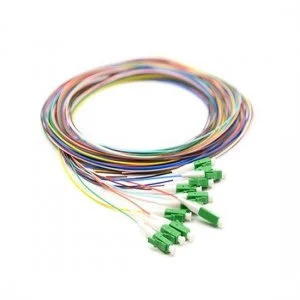
Jacketing and Protection: The fibers within the pigtail are typically enclosed in a protective jacket to provide mechanical protection and prevent damage to the individual fibers. The jacket may be made of materials such as PVC, LSZH (Low Smoke Zero Halogen), or plenum-rated materials for use in different environmental conditions.
Overall, 12 fiber pigtails provide a convenient and efficient solution for establishing multiple fiber connections in various fiber optic applications, offering high-density connectivity and reliable performance in optical networks.
Next: Buy Quality 12 LC Cable for Seamless Connectivity
2 notes
·
View notes
Text
12 LC Fiber Optic Cable – High-Density Singlemode Breakout | Fiber-Mart
Enhance your network with Fiber-Mart’s 12 LC cable, a singlemode breakout solution built for high-density data environments like data centers and enterprise systems. Featuring 12 strands of flat MTP to LC/SC/FC/ST fiber, this cable offers fast, efficient connectivity while reducing signal loss. Its LSZH outer jacket ensures safety and compliance, making it ideal for riser and plenum installations. This cable supports quick deployment and excellent performance in structured cabling systems, where space-saving and high-capacity transmission are critical.
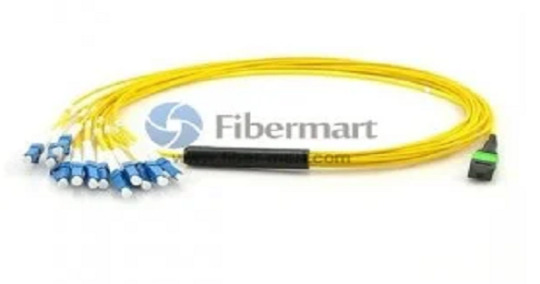
0 notes
Text
FAN OUT CABLES
Understanding Fan-Out Cables: The Essential Connection for Fiber Optic Networks
In the world of fiber optics, ensuring that signals are transmitted efficiently across multiple channels is crucial for modern communication systems. One of the key components used to achieve this is fan-out cables. These specialized cables play an important role in splitting and distributing signals across various endpoints in fiber optic networks. Whether you're setting up a data center, upgrading your broadband infrastructure, or managing a complex telecommunications system, understanding fan-out cables and their uses can help you make the right decisions for your network.
In this blog, we’ll dive into what fan-out cables are, how they work, and why they’re an essential component in fiber optic communication systems.
What is a Fan-Out Cable?
A fan-out cable is a type of fiber optic cable that takes a single high-count fiber optic cable and separates it into multiple individual fibers. Essentially, it “fans out” the individual fibers from a single cable, allowing you to connect multiple devices or endpoints to a single trunk line. This type of cable is designed to help organize and manage fiber connections in complex setups where a single cable needs to be distributed to multiple locations.
Fan-out cables are often used in fiber optic patch panels, distribution frames, or splicing systems, helping reduce clutter, improve organization, and ensure smooth data transmission.
How Do Fan-Out Cables Work?
A typical fiber optic system involves a trunk cable (which can contain many fibers) that runs from a central location (like a switch or a server room) to various endpoints. However, each endpoint needs to be individually connected to the network, which is where fan-out cables come in.
A fan-out cable consists of a buffer tube that holds multiple fibers inside. The cable splits the fibers at the termination point, often converting a high-fiber count (like 12, 24, or more) into individual fibers for easier patching and connection.
Here's how they typically work:
Trunk Cable: A high-count fiber optic cable (like a 12-fiber or 24-fiber cable) comes into the fan-out cable.
Buffer Tubes: The individual fibers inside the trunk cable are grouped together in buffer tubes, which help protect the fibers.
Fan-Out: The cable splits, with each individual fiber being separated out for easier termination, allowing technicians to connect them to patch panels or other equipment as needed.
This “fan-out” effect helps maintain a clean and organized setup while also allowing flexibility in fiber network management.
Types of Fan-Out Cables
There are two primary types of fan-out cables based on their configuration and application:
Standard Fan-Out Cable:
This is a typical fan-out cable used to separate a high-count fiber optic cable into multiple individual fibers. Standard fan-out cables are used in patch panels, distribution frames, and other equipment where individual fibers need to be connected to specific locations.
Breakout Fan-Out Cable:
Breakout fan-out cables have individual fibers that are terminated with connectors (like LC, SC, or MTP connectors). These are often used when a single fiber needs to be quickly connected to network devices like routers, switches, or patch panels without the need for further splicing.
Breakout cables are typically used when you need to connect individual fibers directly to active network equipment, whereas standard fan-out cables are often used in environments where fiber terminations and connections need to be centralized and managed.
Key Benefits of Fan-Out Cables
Fan-out cables are designed to improve the efficiency and organization of fiber optic networks. Here are some of the main benefits of using fan-out cables:
1. Organization and Cleanliness
One of the biggest advantages of fan-out cables is their ability to help maintain a clean and organized network setup. In high-density fiber optic systems, managing large bundles of cables can become a mess without the proper tools. Fan-out cables split a high-count fiber bundle into smaller, more manageable units, allowing for easier identification and termination.
2. Simplified Network Management
By breaking out individual fibers, fan-out cables allow network technicians to easily manage, terminate, and test each fiber separately. This makes maintenance and troubleshooting much more straightforward and allows for a more flexible network infrastructure.
3. Flexible Connections
Fan-out cables provide flexibility in your fiber optic network, allowing multiple devices to connect to a single high-count fiber trunk. Whether you need to connect a few devices or many, fan-out cables make it easier to route signals and ensure high performance across the network.
4. Cost-Effective
While the initial investment in fiber optics can be expensive, fan-out cables help reduce the cost of upgrades and expansions. By allowing a single trunk cable to be split into multiple fibers, you can increase the capacity of your existing fiber optic infrastructure without needing to install new cables for each connection point.
5. Easy to Terminate
Fan-out cables make it much easier to terminate fiber optic connections. Technicians can focus on individual fibers rather than having to deal with a high-count trunk cable, leading to fewer mistakes during installation and faster setup times.
6. Reduced Signal Loss
By keeping the fibers in a manageable and well-organized system, fan-out cables help minimize the risks of signal degradation due to bending, kinks, or poor cable management. Good fiber cable management can maintain the integrity of the signal, ensuring the best possible network performance.
Applications of Fan-Out Cables
Fan-out cables are commonly used in various sectors that rely on fiber optic networks. Some key applications include:
Data Centers
Fan-out cables are used in data centers where large amounts of data need to be transmitted quickly and reliably. These cables help organize fiber connections and improve the efficiency of patching and reconfiguring fiber networks.
Telecommunications
In telecommunications networks, fan-out cables enable the distribution of fiber signals across different locations, ensuring reliable service to both residential and business customers.
Fiber-to-the-Home (FTTH)
FTTH networks use fan-out cables to distribute fiber optic signals from a central node to homes and businesses, providing high-speed internet, television, and phone services.
Campus Networks
Universities, hospitals, and corporate campuses often use fan-out cables to distribute fiber optic connections to multiple buildings or floors, creating a robust and scalable network.
Long-Distance Fiber Optic Networks
Fan-out cables are also employed in long-distance transmission systems, where a single trunk fiber optic cable needs to branch out into multiple separate fibers at various endpoints, such as relay stations or regional hubs.
Conclusion
Fan-out cables are an essential part of modern fiber optic networks, allowing for efficient and flexible distribution of high-bandwidth data across multiple endpoints. Whether you're building a data center, connecting remote locations, or upgrading your telecommunications infrastructure, fan-out cables provide a simple solution for improving cable management, maintaining high signal quality, and simplifying network expansion.
With the growing demand for high-speed internet and data transmission, fan-out cables are more important than ever in ensuring the smooth operation of fiber optic networks. By understanding their role and benefits, you can make better-informed decisions for your network setup, leading to improved performance and long-term scalability.
0 notes
Text
Unveiling the Versatility of MTP Breakout Cable
In the realm of optical communication, the MTP breakout cable emerges as a versatile solution for efficiently connecting high-density MTP/MPO interfaces to individual optical fibers. This innovative cable design enables seamless integration and transmission of multiple optical signals, catering to the diverse needs of modern communication networks. MTP breakout cable, equipped with MTP/MPO…
View On WordPress
0 notes
Video
youtube
✨Add Cable Label for MPO Breakout Patch Cable
More information about the MPO/MTP fiber patch cord can be browsed here🥰 https://holightoptic.com/?s=MPO&lang=en Should any of these products interest you, please let us know. We look forward to hearing from you soon ~
0 notes
Text
https://www.china-tscom.com/products/mpo-harness-cable/
MTP®/MPO harness cables are a kind of MTP®/MPO fanout harness cable or breakout cable assembly with one MTP®/MPO connector on one end and multiple single-fiber connectors (LC, SC, FC, etc.) on the other end, designed for data distribution and routing to patch panels. It is used to transition from trunk backbone assemblies to fiber rack systems. The MTP® harness cable is fully configurable, available with a variety of cable and connector combinations. For the hardware and equipment in the same cabinet, the longer MPO cord can provide flexibility at any location, and the branch MTP®/MPO cable can be winded into the vertical cable organizer.
MTP®/MPO Harness Cable Features
Our MPO/MTP harness cable is with low loss performance.
MPO / MTP in 8/12/16/24/32 fibers interfaces for choices.
This MTP/MPO fanout harness cable is available in OS1, OS2, G.657A2, OM3, OM4 Fiber Grades – OM1 and OM2 available upon request.
Option for LSZH, OFNP or OFNR cable jacket.
100% factory terminated and tested.
Pulling eyes are provided as an option to protect the fiber ends during installation.
Save installation and reconfiguration time.
MTP®/MPO Harness Cord Applications
MPO-LC harness cables are dedicated for direct connection between MPO trunk cables and equipment with SFP+ ports via an MPO adapter. Available in polarity A, B or C, these MPO-LC harness cables as well enable connection to SFP+ ports in adjacent racks.
MPO-LC harness cables are compatible with all other MPO module cassette-based systems without any loss of optical performance.
MPO-LC harness cable is typically constructed with a mini cable that features by small diameter, low weight, and low bend radius. In a typical scenario, it’s used to make connections within the same rack or go-between adjacent racks via overhead cabling trays, slots or open ducting systems.
Data Center Interconnect
High-Density Fiber Management
Telecommunication Networks and CATV networks
LAN/WAN Premises
Standards Compliance of MTP®/MPO Harness Cable
TIA/EIA-568.3-D and ISO/IEC 11801;
IEC-61754 & EIA/TIA-604-5;
NFPA 262 or IEC 60332;
EN 50575;
Our MPO/MTP harness cable complies with GR-1435-CORE, GR-2866-CORE, GR-326-CORE;
Our 100g harness cable is compliant to Directive 2002/95/EC (RoHS) and REACH SvHC.
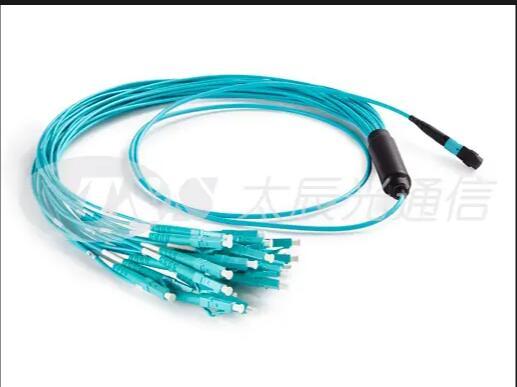
1 note
·
View note
Text
MTP/MPO Fiber Optic Cable: Types and Their Applications
With ever-greater bandwidths and network connections to deal with in data centers, traditional duplex fiber patch cords like LC fiber patch cords no longer meet the demands. To solve this issue, MTP/MPO fiber optic cable that houses more fibers in a multi-fiber MTP/MPO connector was introduced in the market as a practical solution for 40G/100G/400G high-density cabling in data centers. This article will introduce different MTP/MPO cable types and their applications.
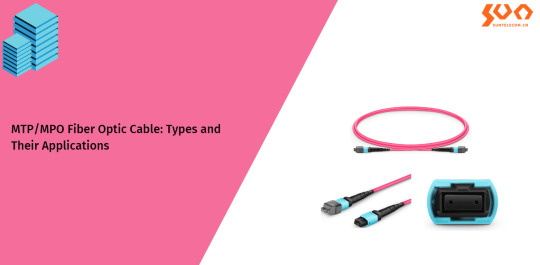
What is MTP/MPO Cable?
MPO (multi-fiber push-on) is the first generation of clip-clamping multi-core fiber optic connectors. MTP is an advanced version of MPO with the better mechanical and optical performance. They look similar and are fully compatible and interchangeable.

MTP/MPO cable consists of MTP/MPO connector and optical fiber. MTP/MPO connector has a female type (without pins) or a male type (with pins). MTP/MPO connector increases the fiber optic cable density and saves circuit card and rack space, which is well suited for current data center cabling and future network speed upgrades.
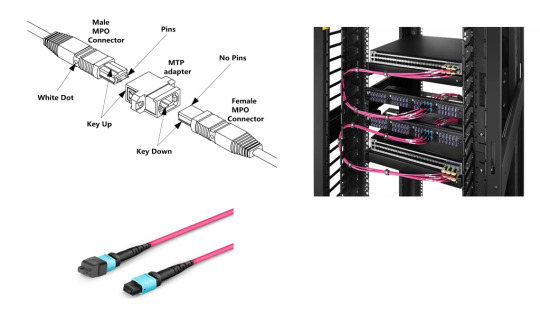
MTP/MPO Cable Types
MTP/MPO cable types are classified based on function, polarity, fiber count, fiber mode, and jacket rating.
By Function
Based on function, MPO/MTP cable type is divided into MTP/MPO trunk cable, MTP/MPO breakout cable, and MTP/MPO conversion cable.
MTP/MPO Trunk Cable
MTP/MPO trunk cable is terminated with an MTP/MPO connector (female/male) on both ends, which is available in 8-144 fiber counts for users’ choices. Typically, MTP/MPO trunk cable is ideal for creating a structured cabling system, including backbone and horizontal interconnections such as 40G-40G and 100G-100G direct connections.

2.MTP/MPO Breakout Cable
MTP/MPO breakout cable (aka. harness cable or fanout cable) is terminated with a female/male MTP/MPO connector on one end and 4/6/8/12 duplex LC/FC/SC/ST connectors on the other end, such as 8-fiber MTP/MPO to 4 LC harness cables and 12-fiber MTP/MPO to 6 LC harness cables. Typically, MTP/MPO breakout cable is ideal for short-range 10G-40G and 25G-100G direct connections or for connecting backbone assemblies to a rack system in the high-density backbone cabling.

3.MTP/MPO Conversion Cable
MTP/MPO conversion cable has the same fanout design as MTP/MPO breakout cable but is different in fiber counts and types. MTP/MPO conversion cable is terminated with MTP/MPO connectors on both ends. MTP/MPO conversion cable is available in 24-fiber to 2×12-fiber, 24-fiber to 3×8-fiber, and 2×12-fiber to 3×8-fiber types, and is ideal for 10G-40G, 40G-40G, 40G-100G, and 40G-120G connections, which eliminate fiber wasting and largely increase the flexibility of the MTP/MPO cabling system.
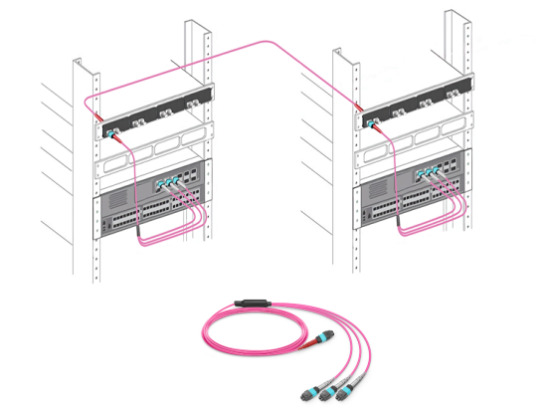
By Polarity
Polarity refers to the difference between the optical transmitters and receivers at both ends of the fiber link. Due to the special design of MTP/MPO connectors, polarity issues must be addressed in high-density MTP/MPO cabling systems. To guarantee the correct polarity of the optical path, the TIA 568 standard defines three connection methods, called Type A, Type B, and Type C. The cables of the three MTP/MPO connector types have different structures.
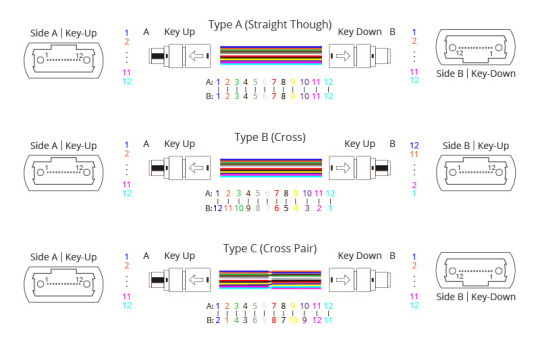
By Fiber Count
Based on fiber count, MTP/MPO cable type is divided into 8/12/16/24 fiber. The 8-fiber MTP/MPO cable can transmit the same data rate as 12-fiber, but with lower cost and insertion loss, making it a more cost-effective solution. 12-fiber MTP/MPO cable is the earliest developed and most commonly used solution in 10G-40G and 40G-100G connections. If it is used in 40G QSFP+ or 100G QSFP28 transceivers, 4 fibers will be idle, resulting in low fiber utilization.16-fiber MTP/MPO is designed for 800G QSFP-DD/OSFP DR8 and 800G OSFP XDR8 optics direct connection and supporting 800G transmission for hyperscale data center. 24-fiber fiber MTP/MPO cable is used to establish a 100GBASE-SR10 connection or 400G connection between CFP and CFP transceivers.

By Fiber Mode
Based on fiber mode, MTP/MPO cable includes single-mode (SM) and multi-mode (MM). SM MTP/MPO cable is suitable for long-distance transmissions, such as in metropolitan area networks (MANs) and passive optical networks PONs (PONs), with less modal dispersion, and it is available in OS2 type. While MM MTP/MPO cable is suitable for short-distance transmission, allowing 40 Git/s maximum transmission distance of 100m or 150m, and it is available in OM3/OM4 types.

By Jacket Rating
According to different fire rating requirements, the jackets of MTP/MPO cable types are divided into low smoke zero halogen (LSZH), optical fiber non-conductive plenum (OFNP), communications multipurpose cable plenum (CMP), etc. LSZH MTP/MPO cable is free of halogenated materials (toxic and corrosive during combustion), provides better protection for personnel and equipment in a fire, and is suitable for closed places. OFNP MTP/MPO cable contains no electrically conductive elements and is designed with the highest fire rating, which can be installed in ducts, plenums, and other spaces for building airflow. CMP MTP/MPO cable can restrict flame propagation and smoke exhaust rate during a fire, which is suitable for plenum spaces, where air circulation for heating and air conditioning systems are facilitated.
Conclusion
MTP/MPO cables provide stable transmission, high performance, high-density cabling for various environments, and prevent network bottlenecks, reduce network latency, and expand bandwidth and scalability for future network expansion. Sun Telecom provides total and customized solutions of fiber optic products to the global market. Contact us if you have any needs.
2 notes
·
View notes
Text
Guidelines to choose Right Fiber Patch Cord Types
There are numerous fiber patch cord types, such as OM1, OM2, OM3, OM4 multimode fiber, and OS2 single-mode fiber types. Both elements of the cable are ended with a superior hybrid or single type connector including an SC, ST, FC, LC, MTRJ, E2000 connector in simplex and duplex. These are commonly not ruggedized, contingent upon the application, making them reasonable for inward use. How to pick right fiber patch cord types for your network? Simply pursue these guidelines.
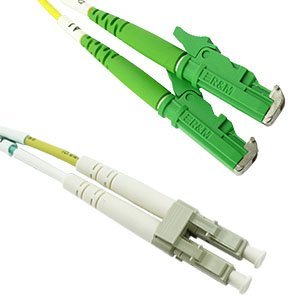
Choose the Right Connector Type (LC/SC/ST/FC/MPO/MTP)
On both ends of the fiber optic patch cord are ended with a fiber optic connector (LC/SC/ST/FC/MPO/ MTP breakout kabel). The distinctive connector is utilized to connect to various gadgets. If ports in the two finishes gadgets are the equivalent, we can utilize, for example, LC-LC/SC-SC/MPO-MPO patch cables. If you need to interface various ports type gadgets, LC-SC/LC-ST/LC-FC patch cables may suit you.
Choose Single-mode or Multimode Cable Type?
Single-mode fiber patch cord utilizes 9/125um glass fiber, LC SC multimode glasfaser patchkabel fiber patch cord utilizes 50/125um or 62.5/125um glass fiber. Single-mode fiber optic patch cord is utilized in long separation information transmission. The multimode fiber optic patch cord is using in short-distance transmission. Run of the mill single-mode fiber optic patch cord utilized yellow fiber cable and multimode fiber optic patch cord utilized orange or aqua fiber link.
Fiber Patch Cord Types – opt for Simplex or Duplex?
Simplex implies this fiber patch cable is with one cord, at each end is just a single fiber connector, which is utilized for Bidirectional (BIDI) fiber optic transceiver. Duplex can be viewed as two fiber patch cable put next to each other, which is utilized for basic handsets.
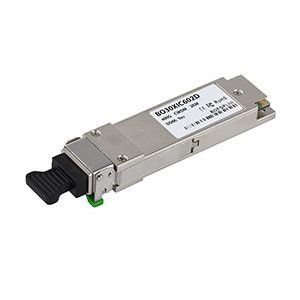
Choose the Right Cable Length (1m/5m/10m/20m/30m/50m)
Fiber optic patch cables are made in various lengths, as a rule from 0.5m to 50m. You ought to pick a fitting link length as indicated by the separation between the gadgets you need to interface.
Choose the Right Connector Polish Type (UPC/APC)
Since the loss of the APC connector is lower than UPC connectors, generally, the optical exhibition of APC connectors is superior to UPC connectors. In the present market, the APC connectors are broadly utilized in applications, for example, FTTx, passive optical system (PON) and wavelength-division multiplexing (WDM) that are progressively touchy to return misfortune. But APC connector is generally costly than the UPC connector, so you ought to gauge the advantages and disadvantages. With those applications that call for high exactness optical fiber flagging, APC ought to be the principal thought, yet less delicate digital systems will perform similarly well utilizing UPC. For the most part, the connector shade of APC patch cable is green, and of UPC patch cable is blue.
Choose the Right Cable Jacket Type (PVC/LSZH/OFNP)
Usually, there are three cable coat types: Polyvinyl Chloride (PVC), Low Smoke Zero Halogen (LSZH) and Optical Fiber Nonconductive Plenum (OFNP).
REFERENCES:
https://diigo.com/0fwajq
http://ttlink.com/gbicshopde
https://www.evernote.com/shard/s411/sh/e668ef3b-f7ee-428e-8953-3dd6587c018d/ca01d4a8096d0d9d0e959219bbb0f27c
https://list.ly/list/3ZLE-get-qsfp28-direct-attach-cables-with-superior-quality?make_list_mode=true
https://justpaste.it/2ek6y
http://tbf.me/a/Bcf8kc
https://in.pinterest.com/pin/759208449668365552
#BlueOptics Transceiver#MTP Breakout Kabel#Direct Attach Kabel#Direct Attach Cables#QSFP28 Direct Attach Cables#LC Uniboot Multimode Glasfaser Patchkabel
0 notes
Text
8 Oct 2019: The AI will interview you now. Uber work. Amazon rumours. Facebook leak.
Hello, this is the Co-op Digital newsletter - it looks at what's happening in the internet/digital world and how it's relevant to the Co-op, to retail businesses, and most importantly to people, communities and society. Thank you for reading - send ideas and feedback to @rod on Twitter. Please tell a friend about it!

[Image: Bladerunner fandom]
The AI will interview you now
Face recognition technology and AI is being used in job interviews in the UK “to identify the best candidates”, says the Telegraph. Unilever and other use HireVue’s AI to
“analyse the language, tone and facial expressions of candidates when they are asked a set of identical job questions which they film on their mobile phone or laptop. The algorithms select the best applicants by assessing their performances in the videos against about 25,000 pieces of facial and linguistic information compiled from previous interviews of those who have gone on to prove to be good at the job.”
It’s not doing face recognition, it’s doing behaviour recognition. Something like: “These facial and speech behaviours are correlated with the interviewee being a good employee - thumbs up, +4 career points”.
It’s natural that this feels a bit wrong because humans are unique and special, right? In truth though, they are bound by fairly predictable behaviours, and really it’s not that hard to have a computer watch the face of a human and make judgements. It’s science you can trust, and in fact it weeds out bias because the machine doesn’t care, unlike a human interviewer who’ll bring loads of messy biases. So it’s a good thing, it’s progress.
Oh sorry wait, it’s a science you can trust as long as the data the machine learning model was trained on was large and unbiased. And as long as none of the interviewees look different to the ones in the training data. And as long as the machine learning doesn’t inadvertently amplify any systemic biases in the hiring organisation’s practices (or Hirevue itself’s). And as long as interviewees can meaningfully give consent to be catalogued by a machine. And as long as no discrimination law is being broken by having the computer say no. And as long as some job applicants aren’t freaked out by being video-interviewed by a Voight-Kampff machine.
Here the newsletterbot is guilty of bias: it believes humans to be sufficiently complex that it will be hard to effectively “machine learn” the problem that is organisations, their people, their culture, their politics, the webs of motivations and incentives, their jobs and the humans that might potentially fit well.
Still, HireVue says they’re serious about ethical and accurate machine learning, so fingers crossed 😬. An interesting read on video interviews. YouTube is full of videos about how to do well in a HireVue video interview, here’s one. Watching them, you’re struck by the asymmetry: the machine and later an employer watching your interview video, but you seeing nothing except the questions and the webcam’s black eye. So interviewing would be perhaps be a bit fairer if the employer also had 30 seconds to consider and 3 minutes to answer on camera the interviewee’s questions.
Unrelated, but relevant because it’s about bias and how it and power are inadvertently expressed in technology: “Google contractors allegedly offered darker-skinned homeless people $5 dollar gift cards to scan their faces for facial recognition software”.
Uber work
Uber’s temp agency platform, Uber Work has launched in Chicago. The company says: “We believe that finding work shouldn’t have to be a job in itself. For positions as diverse as being a prep cook, warehouse worker, a commercial cleaner or event staff, Uber Works aims to make it easier to find and claim a shift.”
Here’s a fictional look at temp workers in 2023, and hopefully Uber Works doesn’t nudge work in that direction. Something that empowers shift workers is a better model: “crowdsourcing information about what it’s really like to work somewhere, turning it into recommendations about employers that could be better for you” (from plucky UK startup Poplar).
Elsewhere, a successful taxi co-op: “A worker owned taxi coop in Southend has grown from 6 to 70 drivers. They repaid all their investors and returned £3000 to their members last year. The same year Uber left the area after failing to compete with them.”
Amazon rumours
Amazon to sell its Go technology to airports, cinemas, sports venues? Interesting if true - eventually there would be a tension between the platform and the grocery businesses (see also: Ocado in 2017ish).
Amazon is said to be hiring property experts in UK.
Similar rumour: but in Los Angeles. A dozen leases have been signed in Los Angeles, reports the Wall St journal. 7 burning questions about Amazon's new grocery chain.
Facebook leak: trust deficit internally?
A Facebooker leaked audio of an all-team Zuckermeet. The media reported it as FB boss Zuckerberg saying he’d fight (too) hard against politicians etc, but the transcript suggests that his comments were actually fairly standard stuff. This story is more notable for the fact that an employee recorded and leaked the meeting - growing cultural/trust deficit internally, perhaps?
Cryptocurrency news
Paypal has pulled out of the Facebook-led Libra cryptocurrency consortium, saying that it’s not you Libra it’s me. Rumours: Mastercard and Visa aren’t so sure either.
Police auctioned off £240,000 of cryptocurrency confiscated from a hacker - if it had been a confiscated 3 Series with a spoiler kit and spinner rims you’d have expected to be able to snag a good deal, but money’s money so maybe there wasn’t a discount in this case.
“The pain in my jaw from holding just one cryptocurrency had reduced me to an all-liquid diet. I was not cut out to be a trader.” - a good piece on the subsistence lives of small-scale cryptocurrency traders (also a decent backgrounder on cryptocurrencies).
Other news
How grocery pickup is evolving - supermarkets trying to make click-n-collect faster.
Supreme Court hands victory to blind man who sued Domino's over website accessibility - see previous story on this.
Climate Action Tech: “empower technology professionals to play our part - to meet, discuss, learn and take climate action” - needed because the tech industry uses a lot of energy.
No good urban ebike deed goes unpunished. “Horrible. One good deed rewarded with a scary blend of the so-called sharing economy, the commercialisation of communal spaces, and authoritarian surveillance capitalism, all sugared with the unbearable style of wackaging. May every dockless bike and scooter scheme go bust as soon as possible.”
Workshop tactics for agile teams - looks good.
Job ad for Ocado developers is neatly placed in the website’s code.
Previous newsletters:
Most opened newsletter in the last month: competing with Amazon Go. Most clicked story: Why don’t we just call agile what it is: feminist.
News 1 year ago: curated convenience and paying with your data.
News 2 years ago: eGovernment (single digital market) and first mile logistics (Amazon keeping inventory in retailer warehousing).
Co-op Digital news and events
What the data and feedback show about 3 digital services in our Food stores.
Public events:
Manchester WordPress User Group - Wed 16 Oct 6.30pm at Federation House.
Tech for Good Live vs the climate crisis - Thu 17 Oct 6.30pm at Federation House.
Business Growth Hub - Moving your business forward - Mon 21 Oct 12pm at Federation House.
Meet the expert - marketing approach - Tue 22 Oct 12pm at Federation House.
Meet the expert - hints and tricks on social media - Wed 23 Oct 1pm at Federation House.
Human values in software production - Tue 5 Nov 6pm at Federation House.
Practitioners Forum: vital lessons for key co-operators - Thu 7 Nov at the Studio, Manchester.
Pods Up North , an event for podcasters - Sat 23 Nov 9am at Federation House.
Mind the Product - MTP Engage - Fri 7 Feb 2020 - you can get early bird tickets now.
Internal events:
Digital all hands - Wed 9 Oct 1pm at Fed House Defiant.
Co-operate show & tell - Wed 9 Oct 3pm at Fed House 6th floor kitchen.
Food ecommerce show & tell - Mon 14 Oct 10.15am at Fed House 5th floor.
Delivery community of practice - Mon 14 Oct 1.30pm.
What has the web team been up to? - Tue 15 Oct 1.30pm at Fed House 5th floor.
Health show & tell - Tue 15 Oct 2.30pm at Fed House 5th floor.
Engineering community of practice - Wed 16 Oct 1pm at fed House Defiant.
Targeted marketing (CRM) show & tell - Wed 16 Oct 3pm at Angel Square 13th floor breakout area.
Membership show & tell - Fri 18 Oct 3pm at Fed House 6th floor kitchen.
More events at Federation House - and you can contact the events team at [email protected]. And TechNW has a useful calendar of events happening in the North West.
Thank you for reading
Thank you, beloved readers and contributors. Please continue to send ideas, questions, corrections, improvements, etc to the newsletterbot’s word gardener @rod on Twitter. If you have enjoyed reading, please tell a friend!
If you want to find out more about Co-op Digital, follow us @CoopDigital on Twitter and read the Co-op Digital Blog. Previous newsletters.
1 note
·
View note
Text

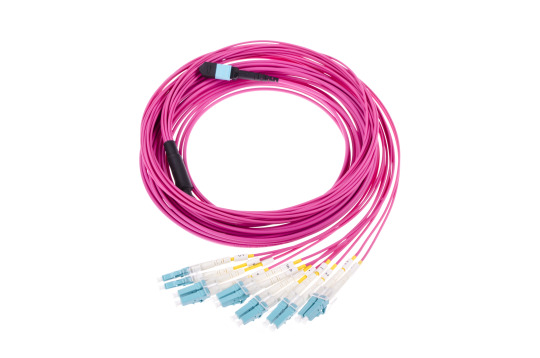


MPO to LC UPC 6 Duplex OM4 12Fibers Breakout Fiber Patch Cable
www.holightoptic.com / [email protected]
#MPO#cable#ftth#telecom#networking#MTP#optical#OM4#patchcords#fibreoptique#datacenters#5Gnetwork#networkingcables#fiberinstallation#holight#fiberoptic#fiberoptics#communication#datacenter#cloud#telecom#ftth#networks#patchcord#telecommunication#fttx#telecommunication
0 notes
Text
MPO Trunk Cable-Its Polarity and Types
Today the use of MTP MPO Cables has increased tremendously. MTP trunk cable is often said an enhanced MPO cable version. MTP connector consists of a removable housing that permits polishing, re-working, and changing of connector heads. To make sure that the cable is not easily broken inside the connector housing it has a more advanced mechanical support system.
However, there are many MPO who from the extensive bending force has implemented the same type of mechanical support and provide breaking resistance, but it never guarantees a removable housing.

MPO trunk cable /MTP technology has some properties like high density, flexibility, and reliability with scalable, upgradeable properties. It ensures that to receive the port of the second piece of active equipment, a transmit signal from any type of active equipment will be directed across a fiber network if the right polarity is maintained.
Three Types of Cables for Three Polarization Methods
MPO Trunk Cable Type A: Type A cable also referred to as straight cable consists of a key up MPO connector on one end and the opposite end a key down MPO connector. The same fiber position can be maintained through these fibers at each end of the cable.
MPO Trunk Cable Type B: On both ends of the cable Type B cable make use of a key-up connector. Inversion happens through his type of array mating, which indicates that at each end the fiber positions are reversed.
MPO Trunk Cable Type C: Having one key up and one key down connector on every side, the Type C cable looks similar to Type-A cable. But, in Type C at one end each adjacent pair of fibers are flipped at the other end.

Conclusion
Network designers make use of MPO/ MTP trunk cable components so that they can satisfy the increasing requirement for higher transmission speed. By doing this one of the big issues that are polarity is solved. MTP connector consists of a removable housing that permits polishing, re-working, and changing of connector heads. However, it also needs a selection of the right types of MPO cassette, MPO cables, MPO connectors, and patch cables.
Main souce: https://fibermart.blogspot.com/
2 notes
·
View notes
Text
12 LC Singlemode MTP Breakout Fiber Cables – Fiber-Mart
Upgrade your fiber connectivity with our premium 12 LC cable solutions at Fiber-Mart. This singlemode MTP breakout cable features 12 strands and is designed for high-density, high-performance network environments. Ideal for data centers, enterprise backbones, and telecom setups, the LC cable offers low insertion loss, superior durability, and easy management. Compatible with standard connectors, it ensures seamless integration and high-speed data transmission. Choose this breakout cable to streamline your cabling system with reliability and precision.
0 notes
Text
12F OptiTap MPO/MTP to 12x SC APC breakout cables. Excellent design for outdoor OSP projects and 100% compatible with Corning OptiTap connectotors, PM me or whatsapp +8618813926110 for more informations.
0 notes
Text
QSFP28 and QSFP+ cabling solution .
LC Duplex Patch Cables
Single-mode patch cables with LC duplex connectors are often wont to connect two transceivers of an equivalent type—40GBASE-LR4-to-40GBASE-LR4 or 100GBASE-LR4-to100GBASE-LR4. The SMF patch cable is one fiber pair with two LC duplex connectors at opposite ends.
The long range QSFP+ and 100G QSFP28 transceiver use single-mode fiber patch cables with duplex LC connectors. This text may introduce the cabling solutions for QSFP+ and QSFP28 transceiver to you.
· Single-mode LC duplex patch cable
· 40GBASE-LR4 QSFP+ 10km, 40GBASE-ER4 QSFP+ 40km, 100GBASE-LR4 QSFP28 10km
12-Fiber Patch Cables with MTP Connectors
12-fiber patch cables with MTP connectors are often wont to connect two transceivers of an equivalent type—40GBASE-SR4-to-40GBASESR4 or 100GBASE-SR4-to-100GBASE-SR4. You'll also connect 4x10GBASE-LR transceivers like 40GBASE-PLRL4 and 40GBASE-PLR4 using patch cables—4x10GBASE-LR-to-4x10GBASE-LR—instead of breaking the signal out into four separate signals. Make sure that you order cables with the right polarity. The MTP connectors on the 12-fiber cables should be key up (sometimes mentioned as latch up, Type B, or Method B). If you're using patch panels between two QSFP+ or QSFP28 transceivers, make sure that the right polarity is maintained through the cable plant.
· Multimode OM3 12-fiber MTP patch cable
· 40GBASE-SR4 QSFP+ 100m, 100GBASE-SR4 QSFP28 70m
· Multimode OM4 12-fiber MTP patch cable
· 40GBASE-SR4 QSFP+ 150m, 100GBASE-SR4 QSFP28 100m
· Single-mode 12-fiber MTP patch cable
· 40GBASE-PLRL4 QSFP+ 1km, 40GBASE-PLR4 QSFP+ 2km
12-Fiber Breakout Cables with MTP-LC Duplex Connectors
12-fiber breakout cables with MTP-LC duplex connectors are often wont to connect a 4x10GBASE-LR or 4x10GBASE-SR transceiver to four separate 10GBASE-LR or 10GBASE-SR SFP+ transceivers. The breakout cable is made from a 12-ribbon fiber-optic cable. The breakout cable splits from one cable with an MTP connector on one end, into 4 cable pairs with 4 LC duplex connectors on the other end.
· Multimode OM3 12-fiber MTP-LC breakout cable
· 40GBASE-SR4 QSFP+ 100m, 100GBASE-SR4 QSFP28 70m
· Multimode OM4 12-fiber MTP-LC breakout cable
· 40GBASE-SR4 QSFP+ 150m, 100GBASE-SR4 QSFP28 100m
· Single-mode 12-fiber MTP-LC breakout cable
· 40GBASE-PLRL4 QSFP+ 1km, 40GBASE-PLR4 QSFP+ 2km
About Flypro.comFLYPRO.com is the leadership of fiber optics direct sales store, including optical modules , fiber optic cables and fiber optic transceivers for Datacenters, Enterprise Network company in USA and Europe.
0 notes
Text
Unveiling the Versatility of MTP Breakout Cable
In the realm of optical communication, the MTP breakout cable emerges as a versatile solution for efficiently connecting high-density MTP/MPO interfaces to individual optical fibers. This innovative cable design enables seamless integration and transmission of multiple optical signals, catering to the diverse needs of modern communication networks. MTP breakout cable, equipped with MTP/MPO…
View On WordPress
0 notes